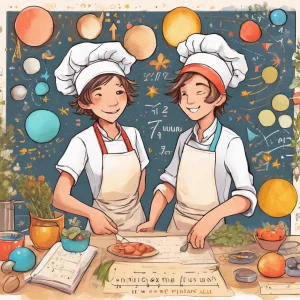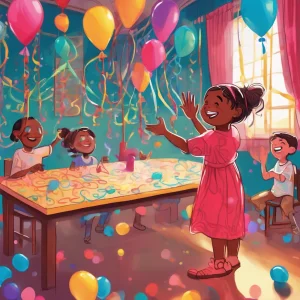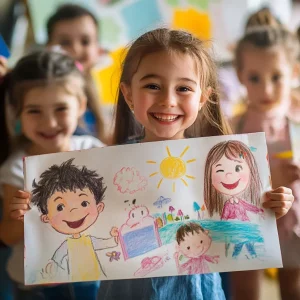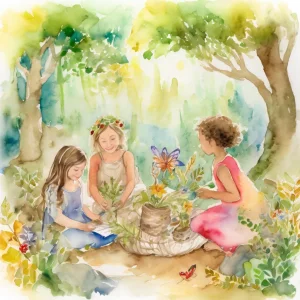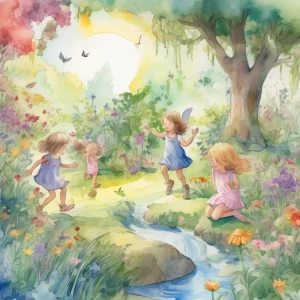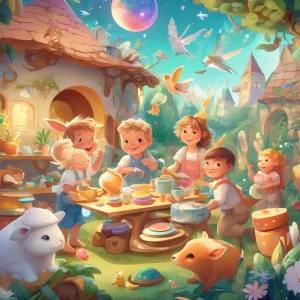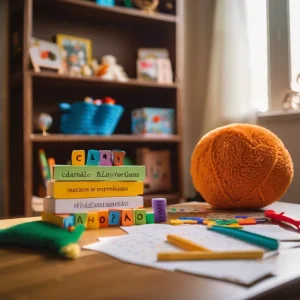Activity
Similar Activities
Musical Instrument Exploration: Symphony of Sensory Play
Children’s Age: 1.5–2 years
Activity Duration: 10 minutes
Explore the Musical Instrument Exploration activity for children aged 18 to 24 months, promoting play skills, self-regulation, and communication development through a sensory-rich …
Activity Duration: 10 minutes
Ecosystem Adventure Board Game - Nature's Quest
Children’s Age: 7–9 years
Activity Duration: 10 – 25 minutes
An interactive board game where children explore and learn about ecosystems through challenges and tasks.
Activity Duration: 10 – 25 minutes
Cosmic Conundrum Chefs: Space Word Problem Adventure
Children’s Age: 7–8 years
Activity Duration: 10 – 20 minutes
Let's play Space Word Problem Chefs! We'll use paper, pencils, and space-themed stickers to explore language and problem-solving. Set up a cozy spot, grab your supplies, and get re…
Activity Duration: 10 – 20 minutes
Enchanted Textures: Sensory Treasure Hunt Adventure
Children’s Age: 0 month – 6 years
Activity Duration: 5 – 10 minutes
Let's go on a Sensory Treasure Hunt adventure! We will explore different textures using our sense of touch. Gather textured items, hide them around the room, and guide the child to…
Activity Duration: 5 – 10 minutes
Enchanted Puppet Show: Creative Communication Adventure
Children’s Age: 0 month – 18 years
Activity Duration: 5 – 10 minutes
Let's have fun with the DIY Puppet Show activity! This activity helps kids improve communication skills and boosts creativity and social interaction. Gather materials like socks, g…
Activity Duration: 5 – 10 minutes
Magical Storytelling: Create Together with Friends
Children’s Age: 4–6 years
Activity Duration: 15 – 30 minutes
In the Create a Story Together activity, children will explore their creativity, language skills, and teamwork. Get small pieces of paper, colored pencils, and a container ready. K…
Activity Duration: 15 – 30 minutes
Enchanted Sensory Bottle Exploration for Little Ones
Children’s Age: 6 months – 1.5 years
Activity Duration: 5 minutes
Engage your child aged 6 to 18 months in a sensory bottle exploration activity to boost their communication, motor skills, and social-emotional development. Create a sensory bottle…
Activity Duration: 5 minutes
Sensory Scarf Play - Gentle Exploration Journey
Children’s Age: 0 – 6 months
Activity Duration: 5 minutes
Engage infants aged 0 to 6 months in a sensory exploration experience with the Sensory Scarf Play activity. This activity aims to stimulate senses, promote adaptive development, en…
Activity Duration: 5 minutes
Enchanted Forest Tales: Nature Play Theater
Children’s Age: 4–6 years
Activity Duration: 15 – 25 minutes
Engage children aged 48 to 72 months in the "Nature Play Theater" activity, fostering communication skills and ecological awareness. Set up an outdoor performance area with natural…
Activity Duration: 15 – 25 minutes
Enchanted Forest: Animal Hunt Adventure Discovery
Children’s Age: 5–7 years
Activity Duration: 15 – 25 minutes
"Animal Hunt Adventure" is an engaging outdoor activity that promotes cognitive development, self-care, and communication skills for children aged 5 to 7. With printed animal pictu…
Activity Duration: 15 – 25 minutes
Whispers of the Forest: Counting and Sorting Nature Scavenger Hunt
Children’s Age: 3–5 years
Activity Duration: 5 – 15 minutes
The Counting and Sorting Nature Scavenger Hunt is perfect for children aged 36 to 60 months, fostering self-regulation, communication, and basic math skills in a delightful way. Ch…
Activity Duration: 5 – 15 minutes
Sensory Music-Making Session: Sound Story Drawing Adventure
Children’s Age: 2–2.5 years
Activity Duration: 5 – 20 minutes
A sensory music-making activity using household items to enhance sensory development and introduce children to the world of music.
Activity Duration: 5 – 20 minutes





